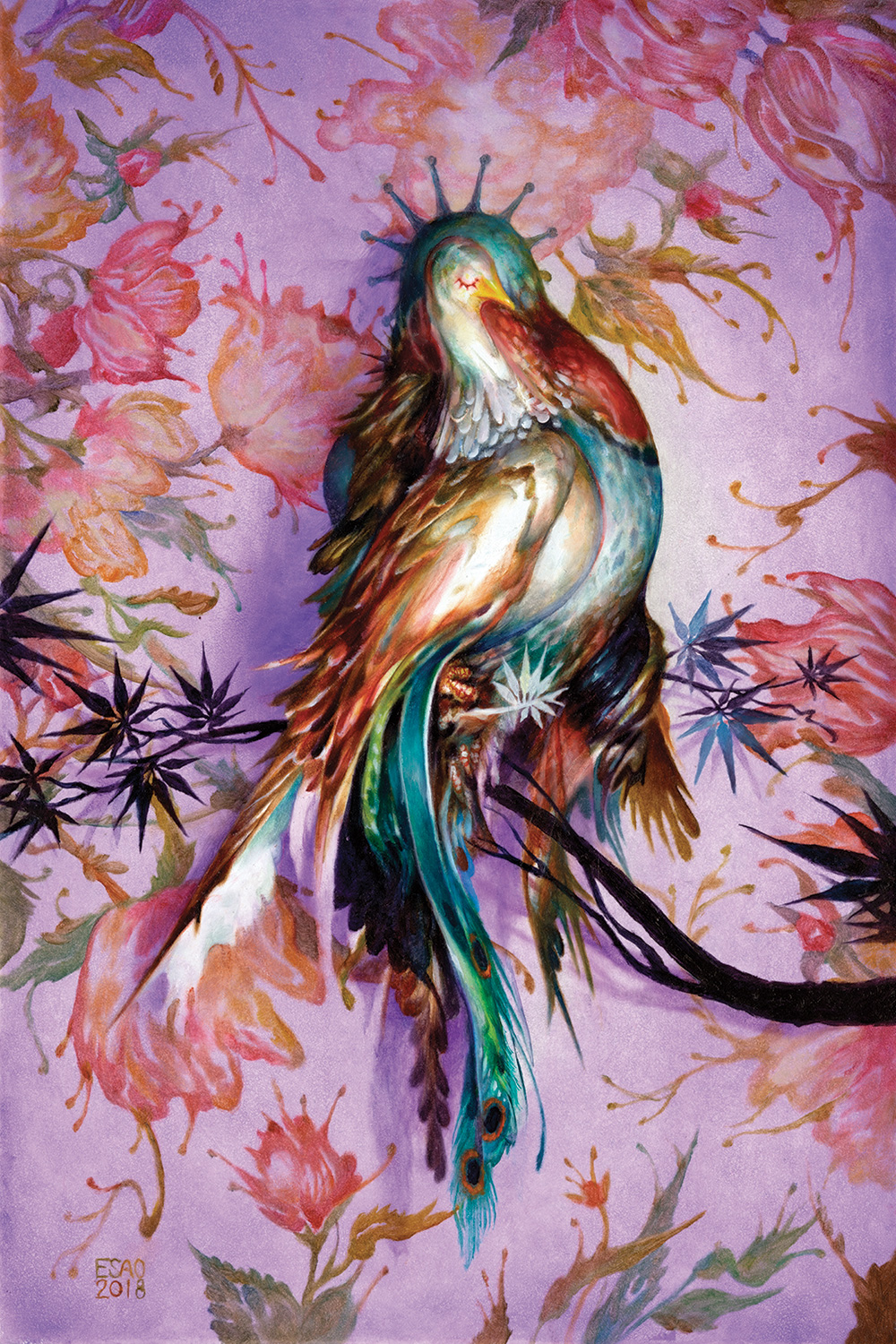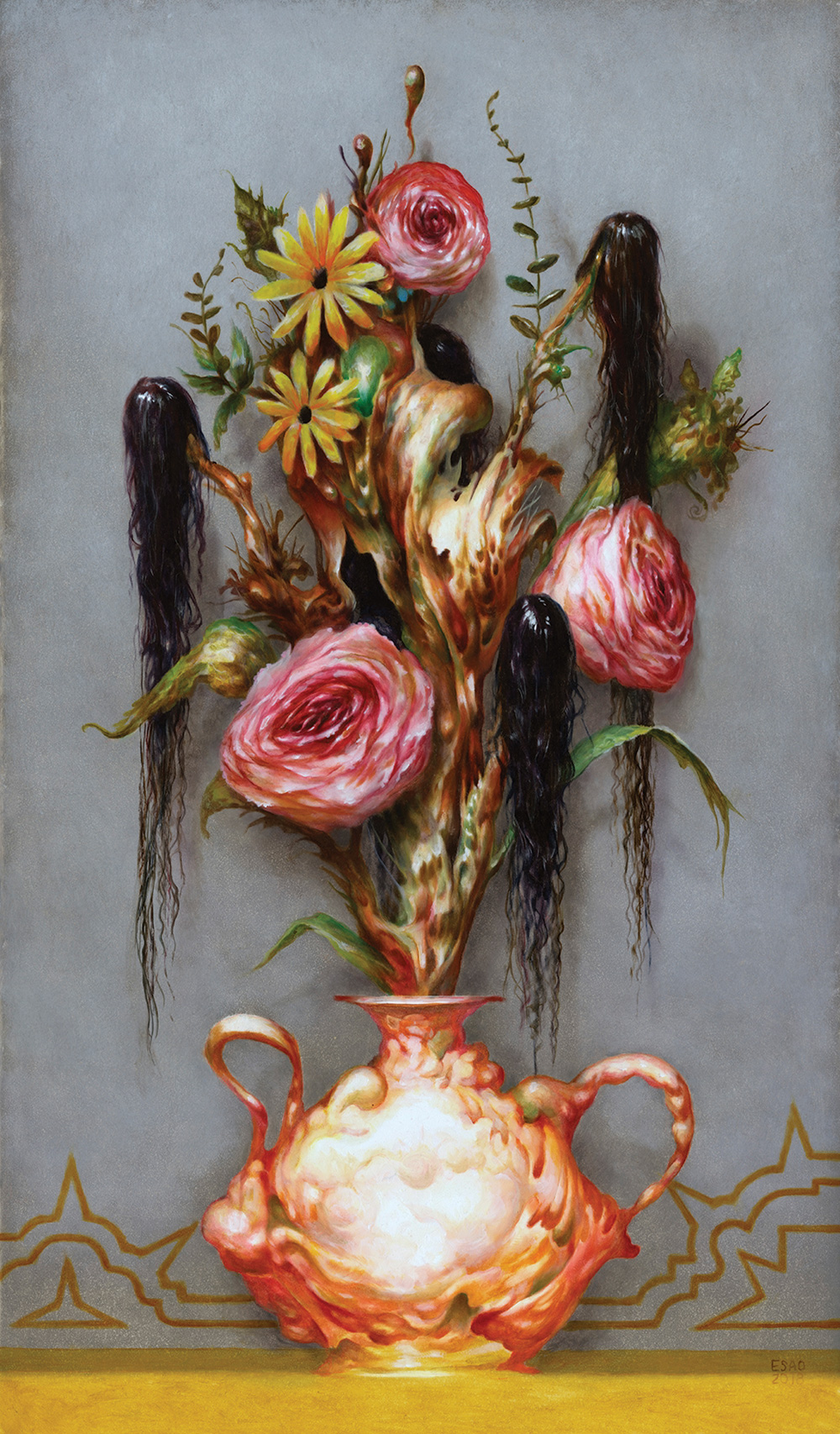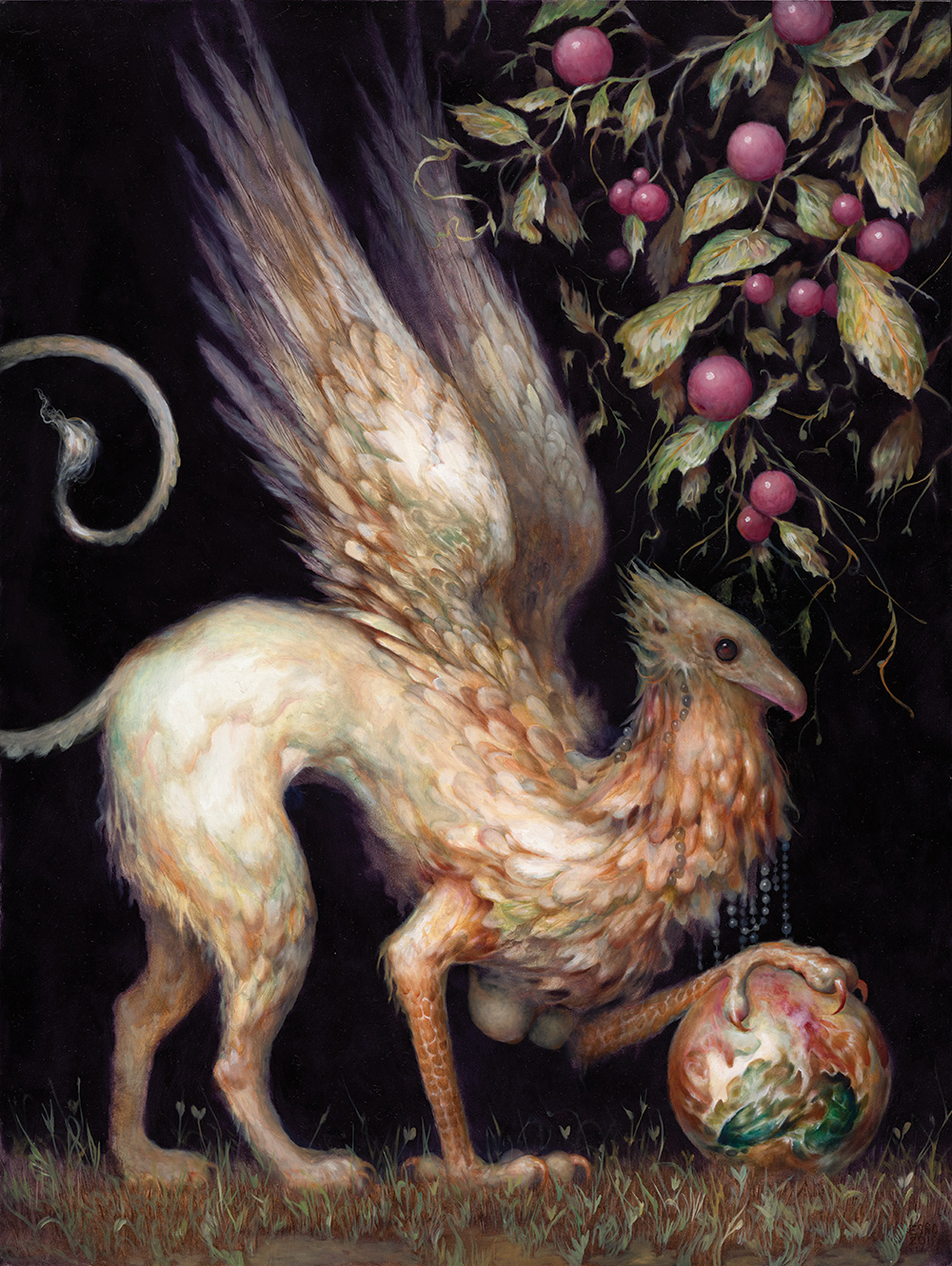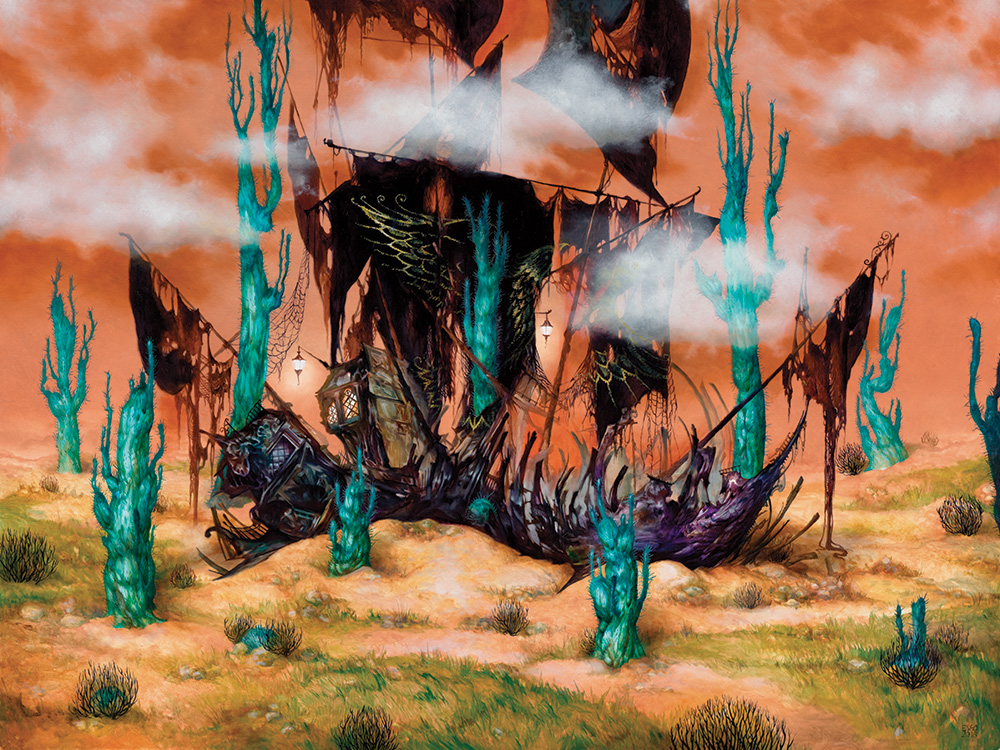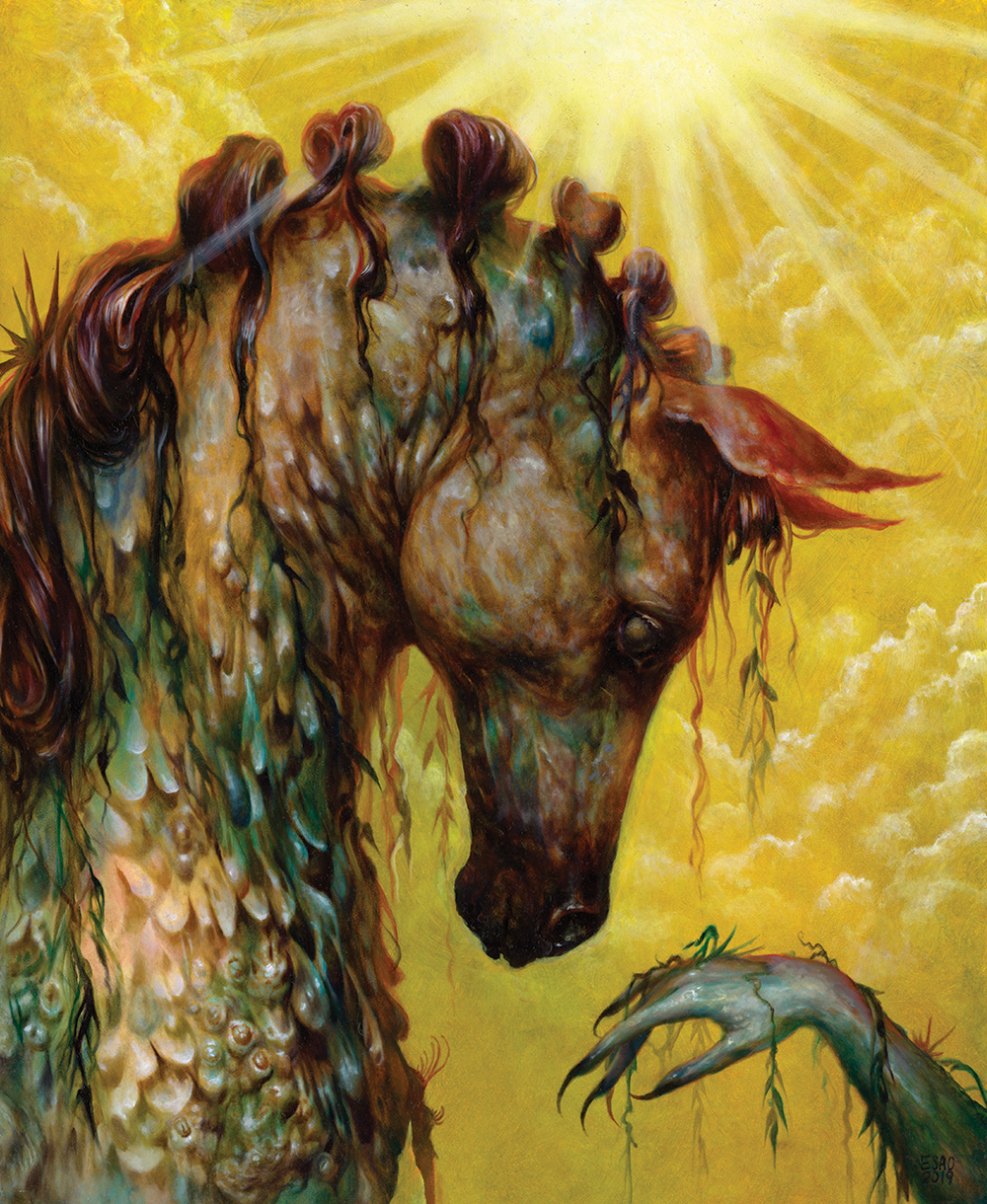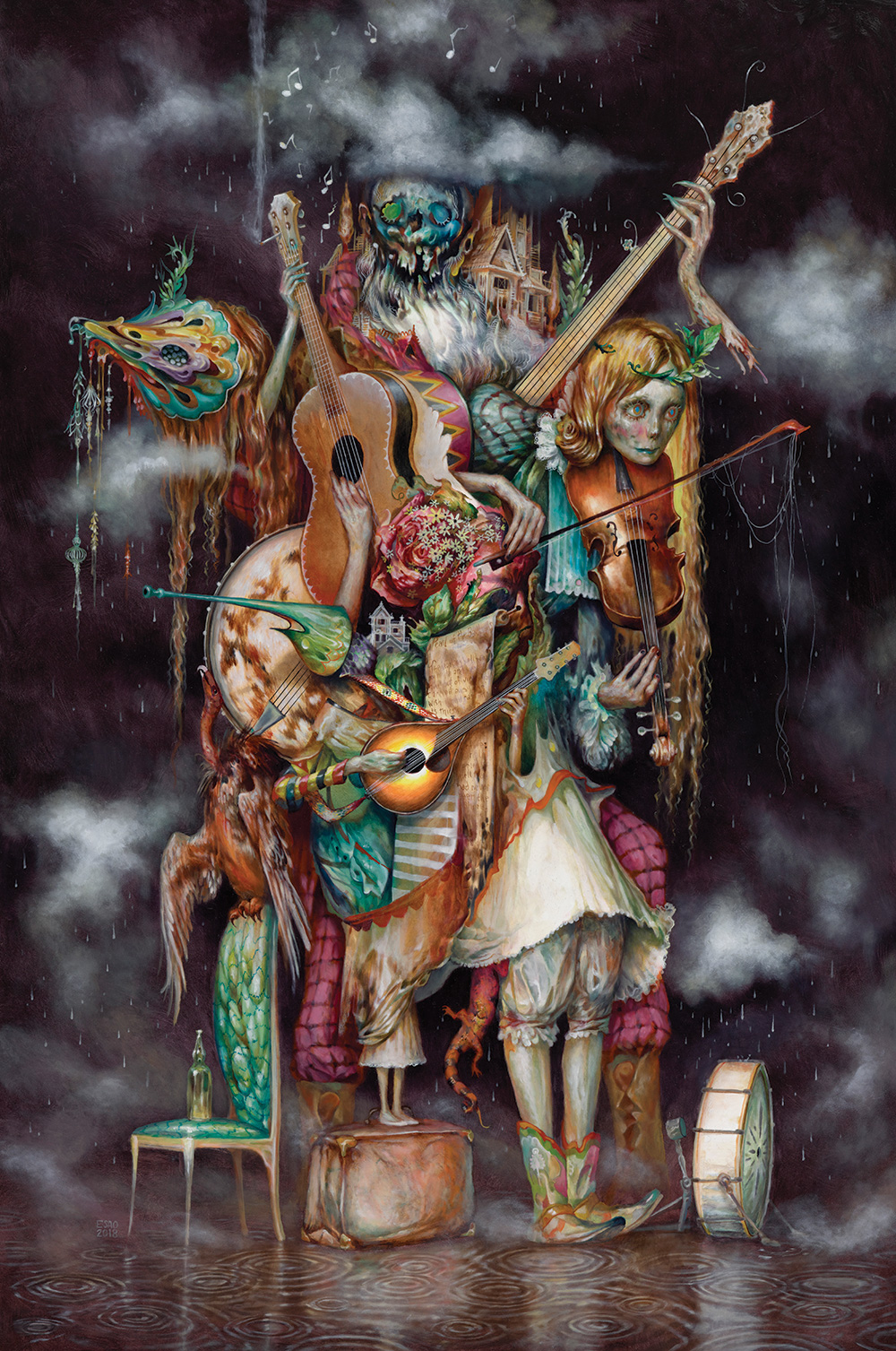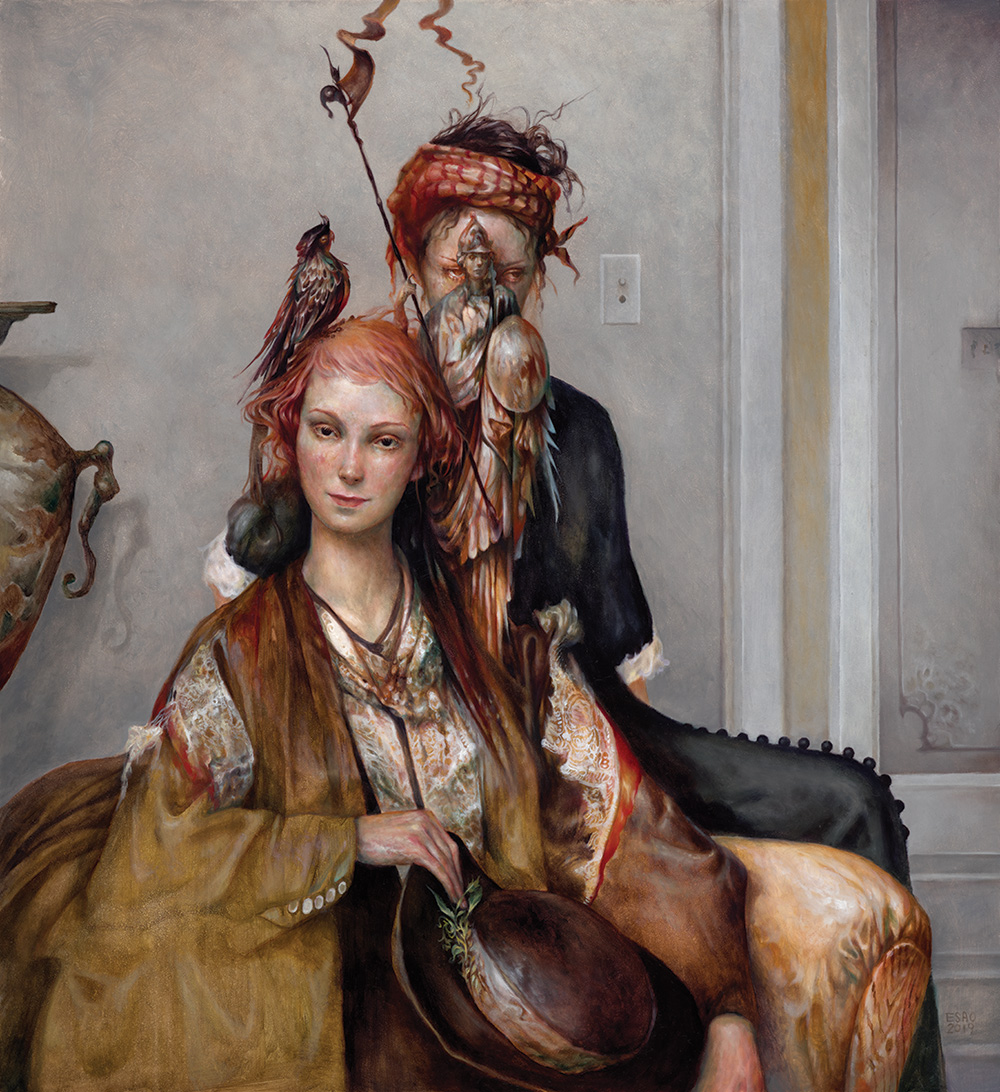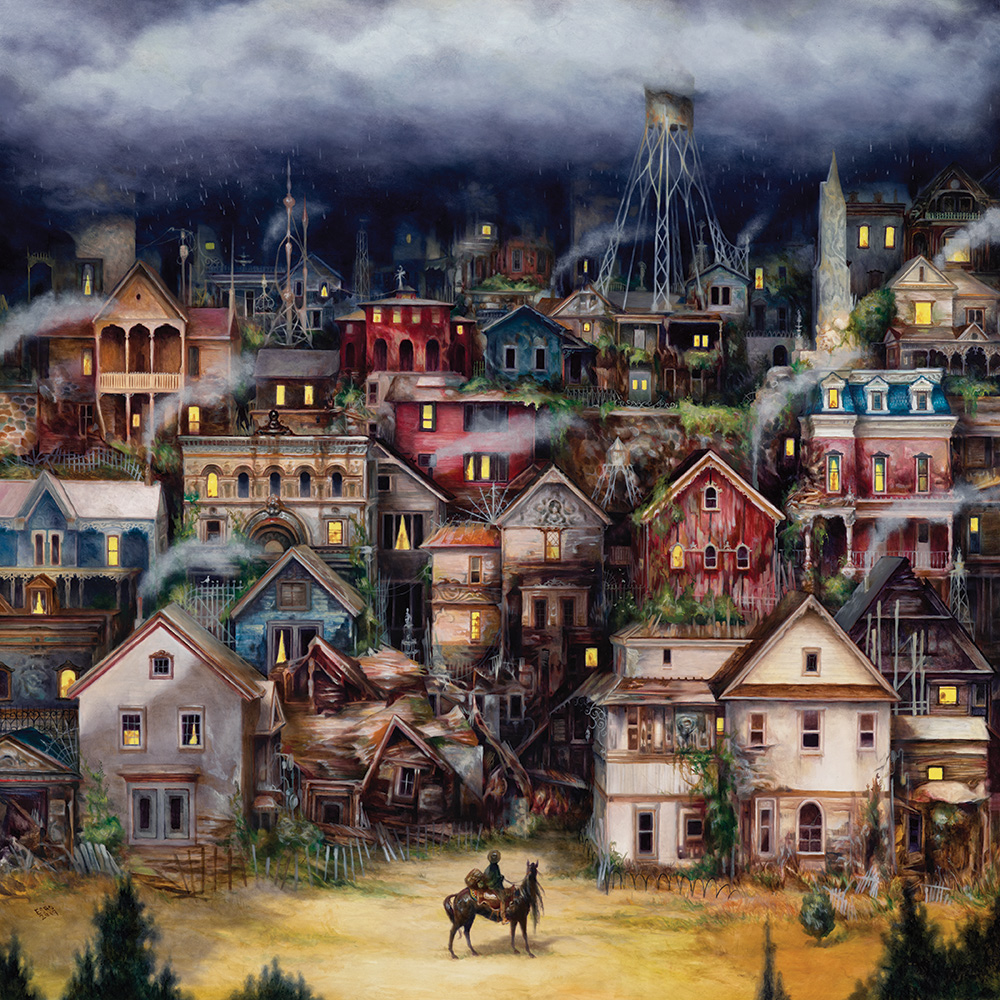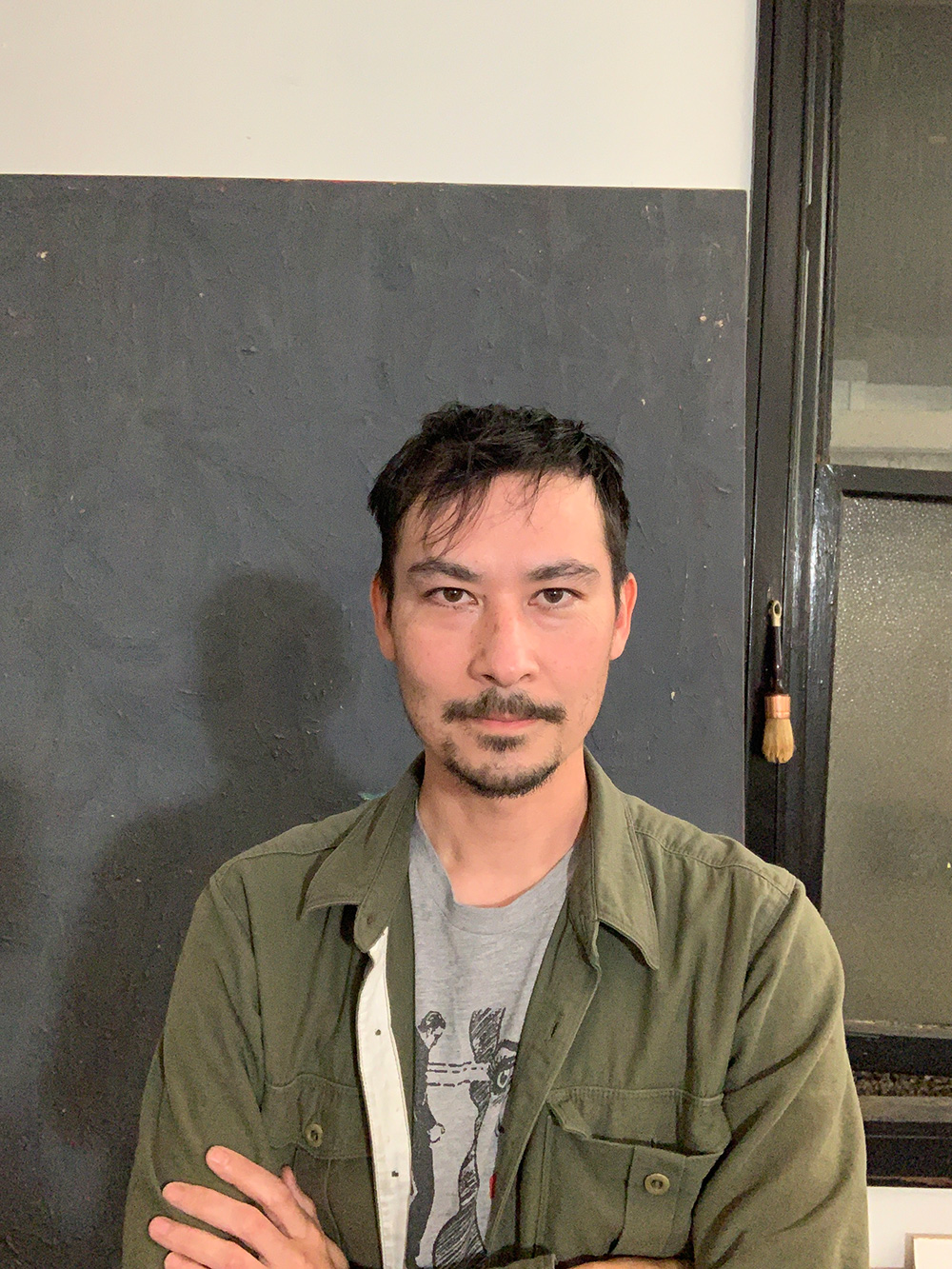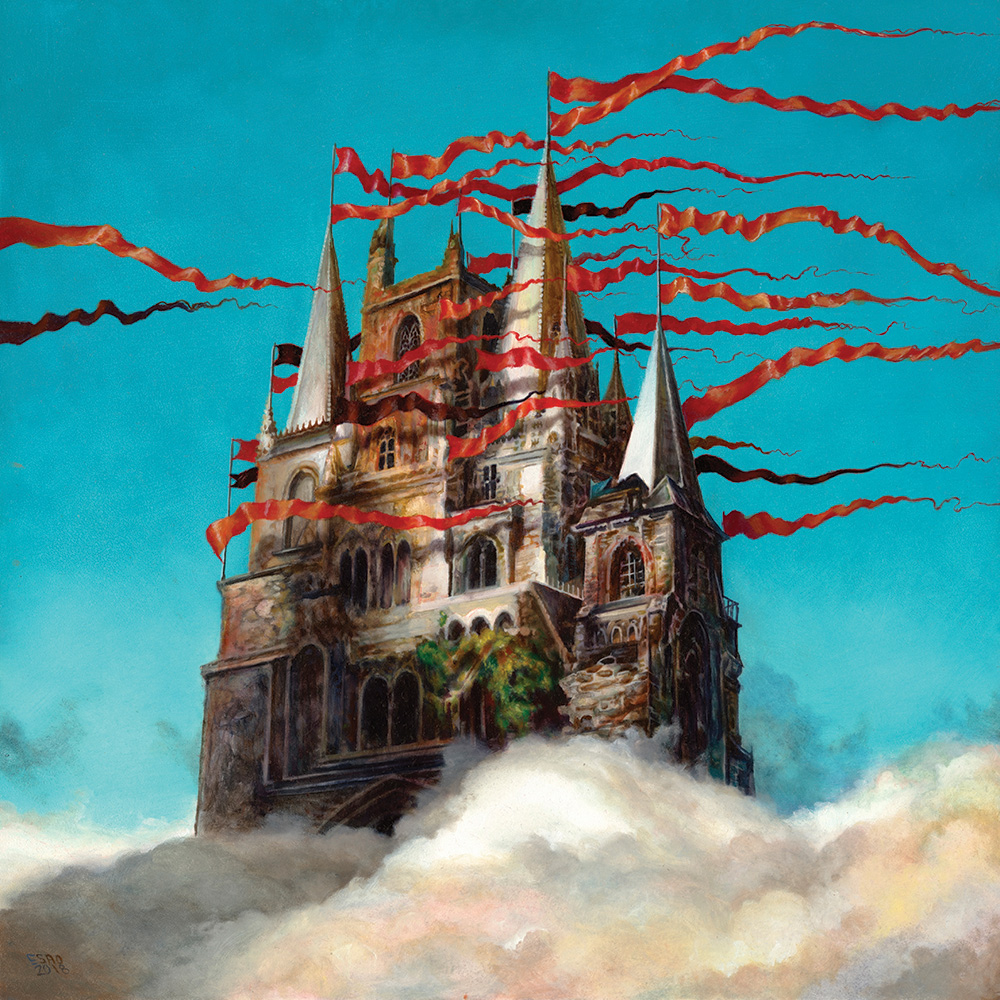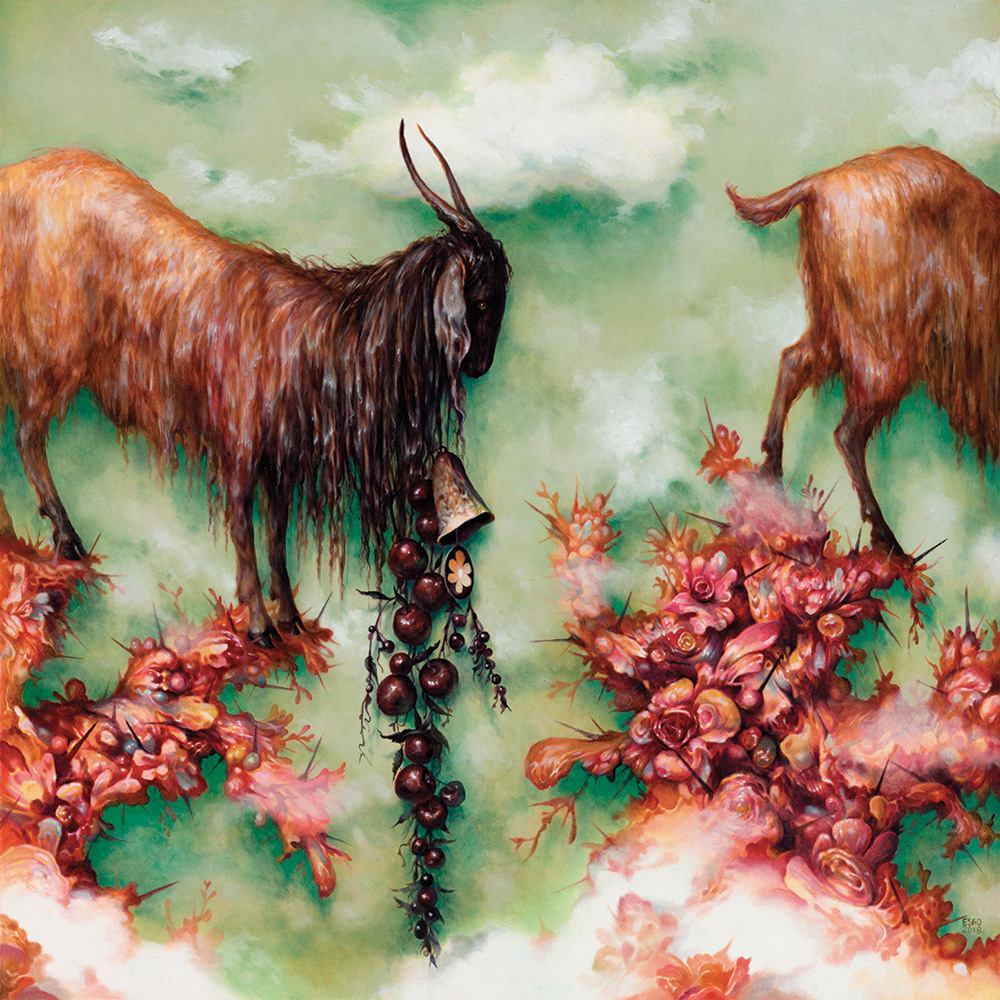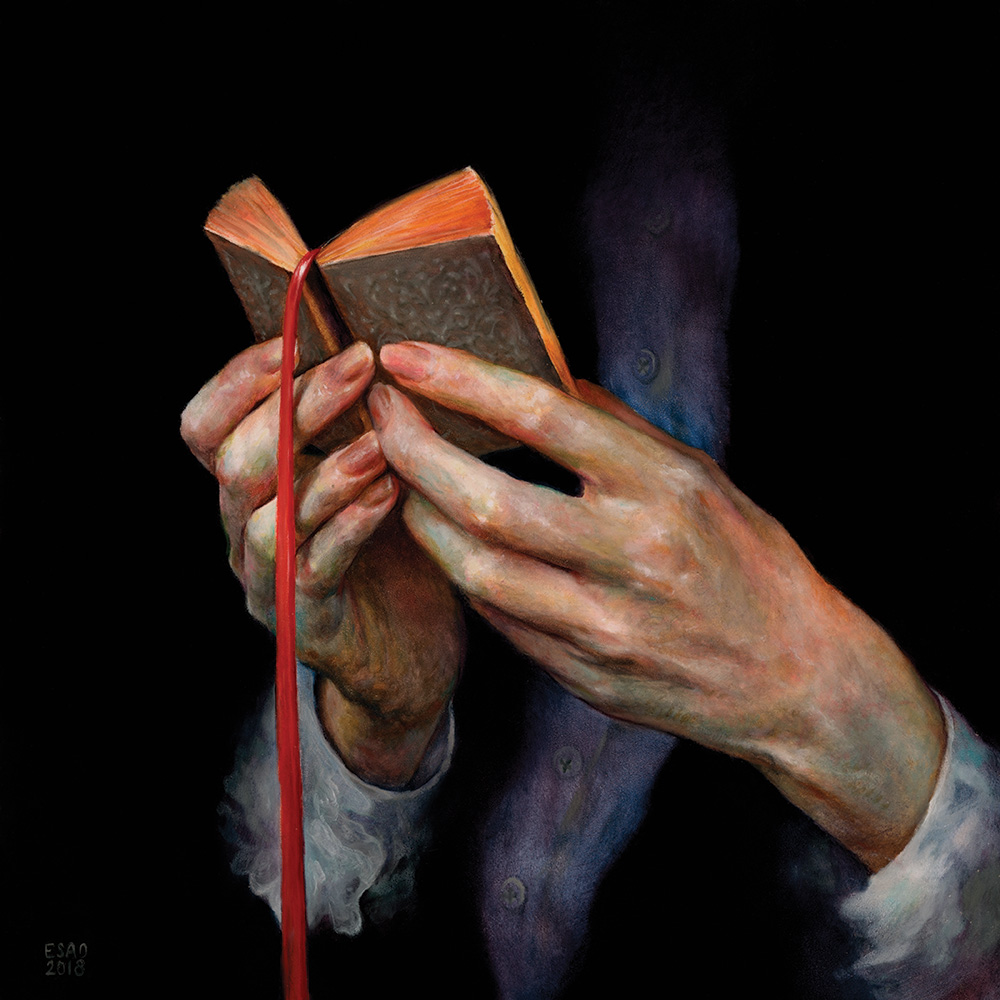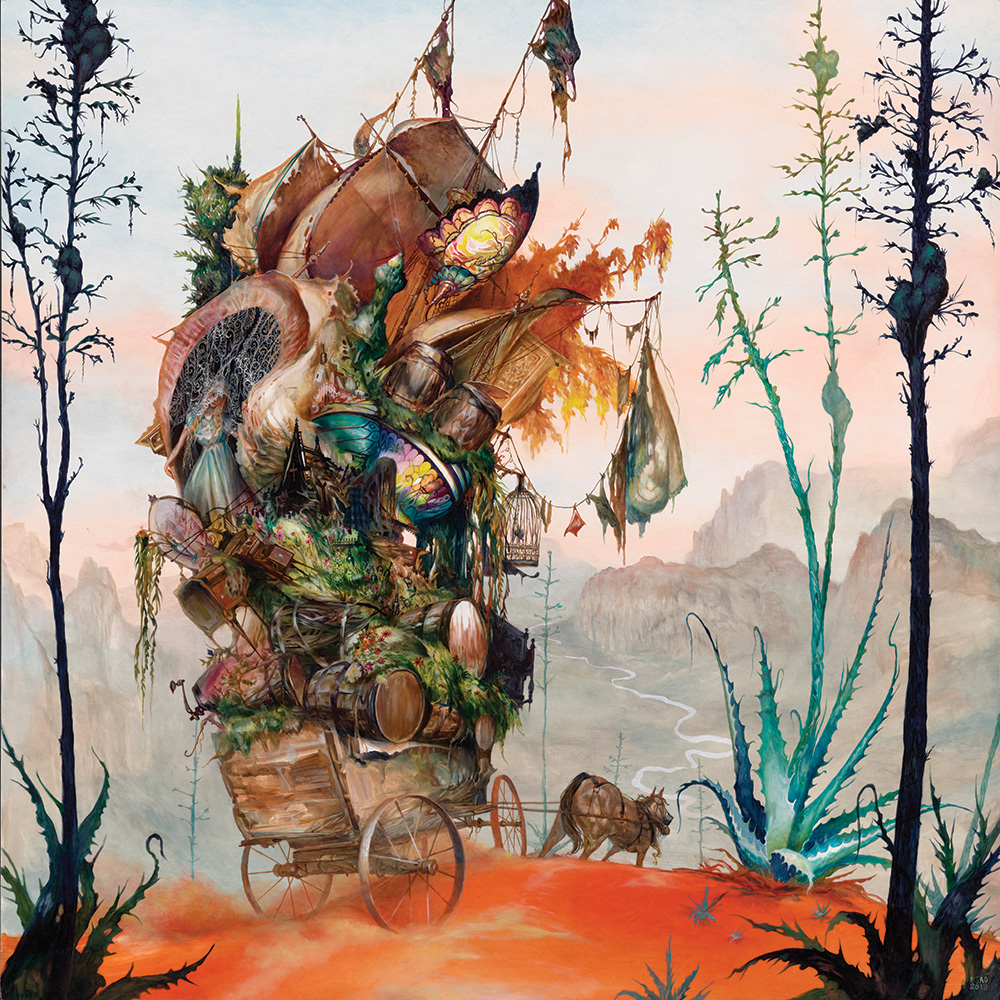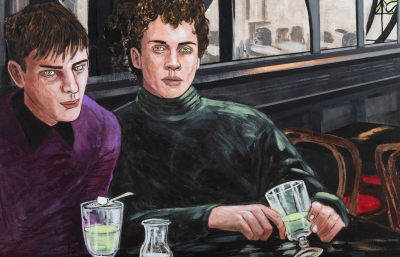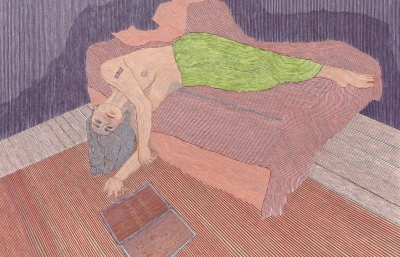Thinkspace Gallery is heading to Mesa, AZ with Petrichor, a mid-career retrospective at the Mesa Contemporary Arts Museum dedicated to the surreal and darkly stylized work of Japanese American artist, and Mesa AZ native, Esao Andrews. Known for his minutely detailed and narratively suggestive paintings, Andrews brings haunting imagery to life through his uniquely mannerist distortion of subjects, both human and animal, and the strange undertow of his desolate, Gothically inspired landscapes. Themed around homecomings, departures, and afflictive transformations, Andrews' works feel drawn from the same collective imaginary reserves as myth.
Andrews attended New York's School of Visual Arts where he studied illustration and completed a B.F.A in 2000. An accomplished figurative painter, he participated in the BP Portrait Award at the National Portrait Gallery, London, in 2002. The artist has worked commercially in tandem with his fine art practice which has, in recent years, grown to include large-scale murals, and produced iconic album cover artwork for American rock band Circa Survive. He has also created numerous comic book covers for DC's Vertigo Comics, and memorable deck designs for Deathwish and Baker Skateboards.
Petrichor will feature over a dozen iconic works by Andrews, borrowed from private collections worldwide, and will include the original artwork from the Circa Survive album releases. Also included in the exhibition are never before seen sketches and maquettes, objects and skateboard decks, and twelve new, never before seen works alongside a site-specific mural created for the retrospective.
Staging a world of unlikely combinations and unexpected tensions, Andrews revels in the surreal elasticity of the subconscious and its penchant for the poetically absurd. No hybrid is too unimaginable, no character too fantastic, no anthropomorphous invention too unthinkable. Objects, animals, and people are all dynamically animate and sentient, subject to the inexplicable rules of their living fictional cosmos. Always one for compelling epilogues, Andrews has revisited past characters and themes throughout his career, building on earlier works and weaving a sort of narrative continuity throughout his output. Though the tone of his imagery often borders on the grotesque or even macabre, a literary impulse links Andrews' works to the fabric of fable and myth, its folkloric threads binding it to something vaguely archetypal and collective in its haunting resonance.
Andrews lists diverse sources of inspiration for his work, everything from art history to skate counterculture. The immersive manga fantasies of anime master Hayao Miyazaki figure prominently among his influences, as do French 19th-Century Academic painting styles, particularly its neoclassical revisitation of myth and the tenebrous cast of its moody contrasts. Andrews also cites the heightened emotional drama of Gustav Klimt's Symbolist Art Nouveau style and Egon Schiele's Expressionistic sensual grotesque as other stylistic sources. Contemporary painters James Jean and Inka Essenhigh list among his inspirations too, as does visionary cartoonist Al Columbia for his masterful, ghoulish reinterpretations of Americana.
Petrichor is said to be the fluid stone coursing through the veins of the Gods in Greek mythology, it is also the warm earthen smell after a downpour on desiccated land, the relief of rain on hot desert and dry air that signals a moment of elemental transformation and all the inexplicable micro-metamorphoses that attend a relieved and changing landscape. This is the dark but beautifully redemptive imaginary Andrews is continually bringing to life - one in which endings and beginnings are indivisibly bound.

